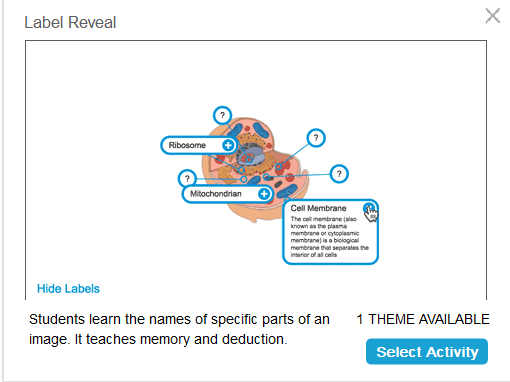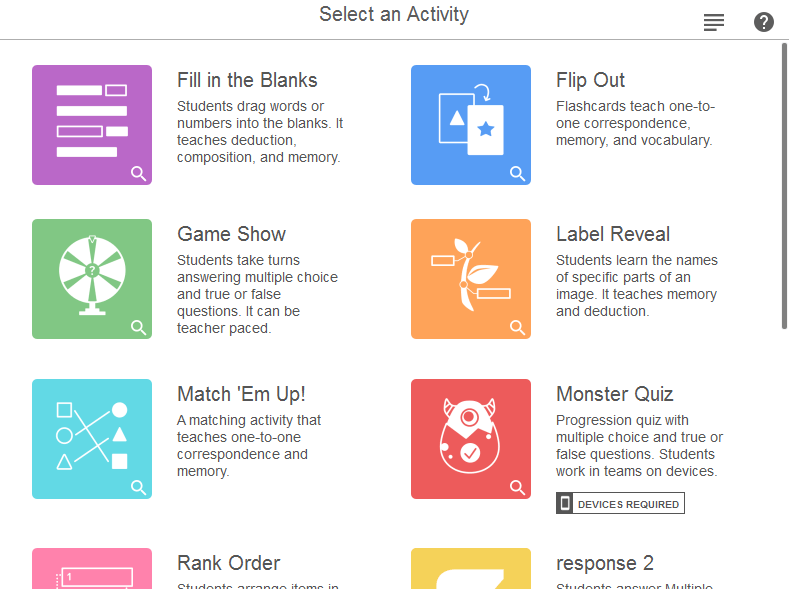Creating a Label Reveal activity
The Label Reveal activity is a great way for students to develop deeper understanding of systems and their components. Label Reveal emphasizes memory and deduction.
Here is an example of a label reveal activity about cell structure.

This example was created by uploading an image of a cell and clicking the various parts of the cell to add labels and notes.
Follow the instructions below to create your own version of this activity.
To create a label reveal activity
Tap Activities
 in the SMART Notebook toolbar.
in the SMART Notebook toolbar.The Select an Activity dialog box opens.

Select Label Reveal.
The activity’s Add Content dialog box opens.
Drag an image into the square box in the activity dialog box.
OR
Tap
 to browse to and select an image saved on your computer.
to browse to and select an image saved on your computer.The image appears in the Label Reveal Add Content dialog box.
Click within the image to add a label.
The Label window and Label edit tool
 open.
open.Move the label to the part of the image you want to label.
Tip
Click
 below the image to reveal options for changing the shape and color of the label arrows.
below the image to reveal options for changing the shape and color of the label arrows.Enter a brief description as the label text. To add an extended note of up to 150 characters, click the down arrow below the label text.
Click Done to close the Note window.
Add up to 10 labels, and then click Finish.
The activity loads and then appears on a new lesson page.
Tip
If you’re delivering the activity at the classroom display, you can add a buzzer, timer, or randomizer game element to facilitate group play. Tap  to open the game element selector, and select the game element you want to add.
to open the game element selector, and select the game element you want to add.
To play a Label Reveal activity
Navigate to the lesson page that contains the activity.
Tip
To enable your students to play the activity or to make contributions from their own devices, see Connecting student devices.
Ask students to identify and reveal component labels as they are discussed.
Each label appears as a question mark icon
 until it is tapped. Tapping the icon reveals the label.
until it is tapped. Tapping the icon reveals the label. 
Tip
Select Hide Labels if you’d prefer to have students guess which elements are labeled by clicking parts of the picture.
If you’ve decided to use game elements, such as timers or buzzers, have two or three small student groups come to the SMART Board and identify the parts of the diagram. After each identification is made, students can tap the buzzer to indicate they’ve made their choice, and they can see how much time their identifications took. Students will enjoy trying to out-do each other to complete the activity quickly.
As an alternative, you can have individual students come to the SMART Board to reveal labels, and you can get the whole class to assist by calling out clues if the student needs help.
Tip
The activity controls appear in the top right corner of the page:
Use
 to turn activity sound on or off.
to turn activity sound on or off.Use
 to restart the activity.
to restart the activity. Use
 to modify the activity.
to modify the activity.
Keywords |
|
Related documents |